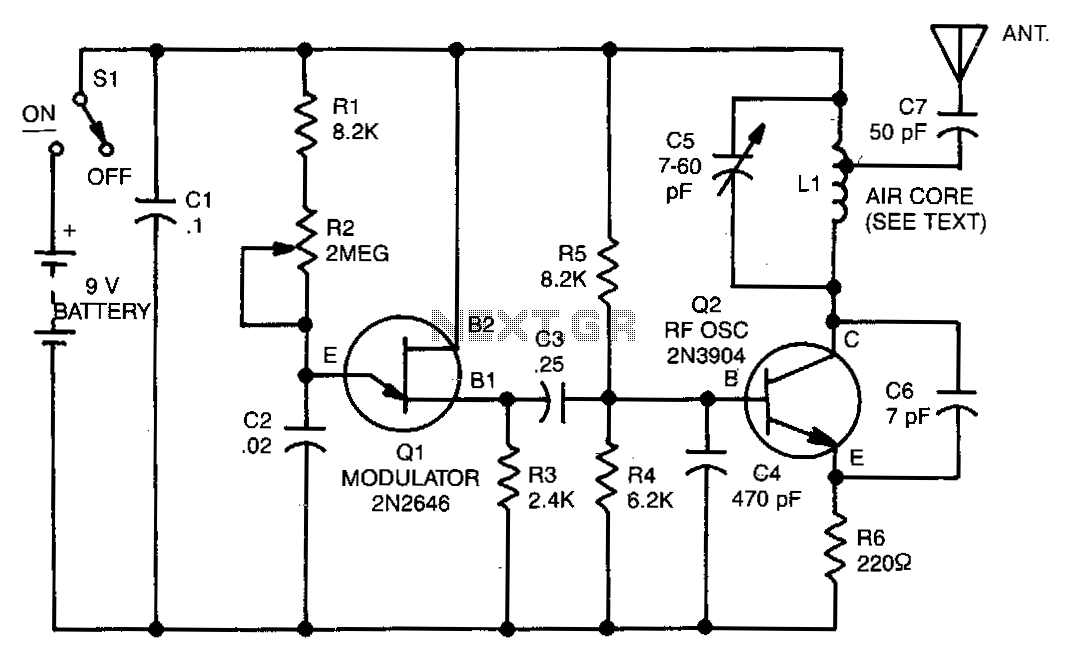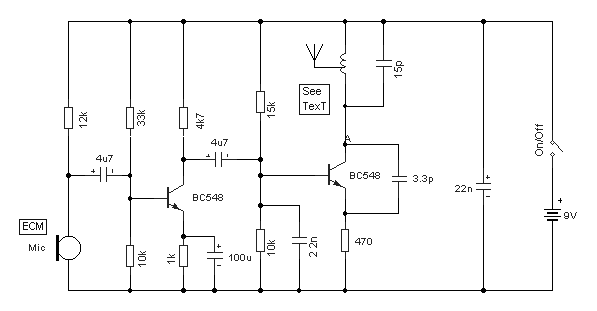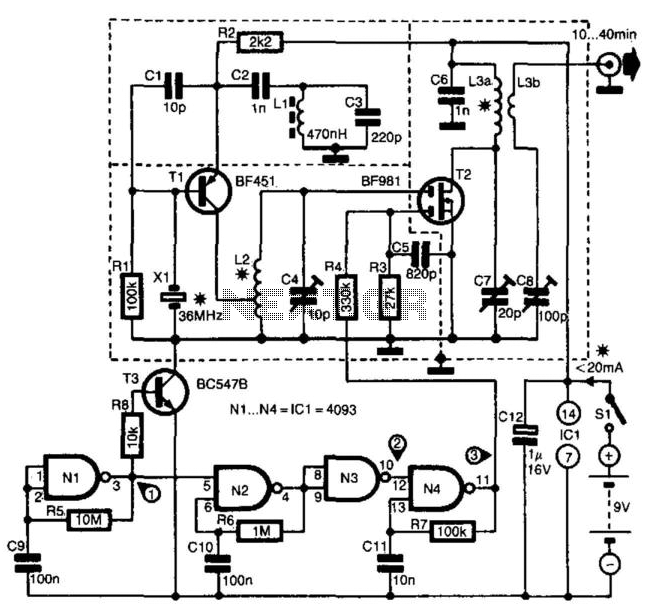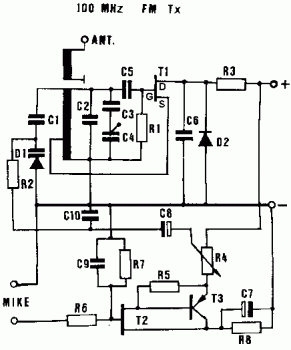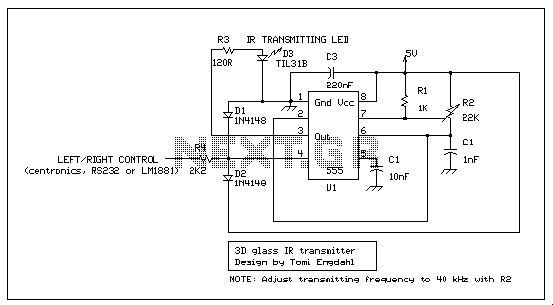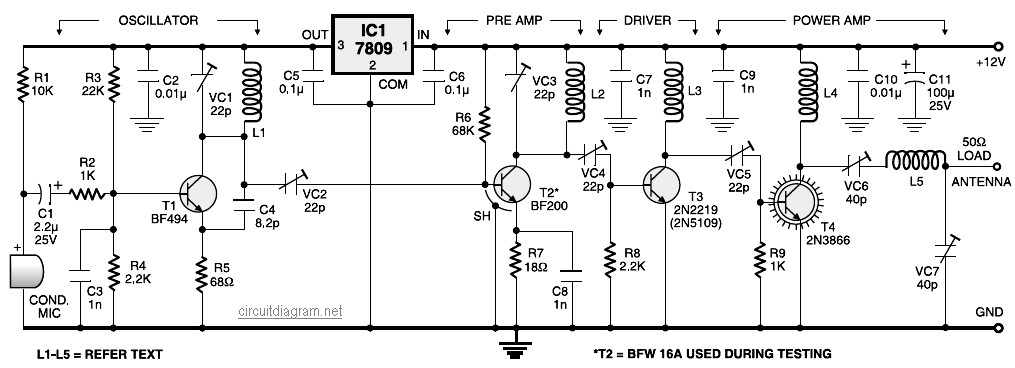
The Bean-Counter AM Transmitter
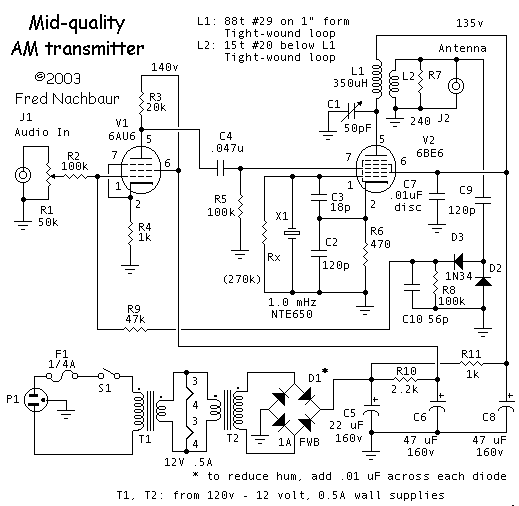
The Muntz one-tube design can be significantly enhanced by incorporating an audio preamplifier stage. This modification increases sensitivity, allowing for full modulation with lower-level signal sources, such as certain older CD players and ceramic phono cartridges. Additionally, implementing negative feedback throughout the transmitter improves linearity and enables deeper modulation levels without distortion. Although the one-tube transmitter operates effectively for a basic circuit, it has notable limitations. One issue is that the input sensitivity is insufficient for some common input sources, and another is the linearity, as the basic one-tube transmitter produces a somewhat harsh audio quality at higher modulations due to harmonics caused by non-linearity. Introducing a second tube as an audio preamplifier addresses the first issue and enhances the second. This adaptation essentially transforms "The Muntz" into a version with a preamp stage that utilizes a 6AU6 pentode, providing substantial gain suitable even for high-output microphones. However, since this circuit is primarily utilized as a line-level amplifier (operating between 0.1 to 2 volts RMS), it is feasible to trade some of this gain for improved fidelity by incorporating an overall negative feedback loop. The network surrounding the pair of germanium diodes performs full-wave rectification of the modulated RF output, similar to the detector in a radio receiver. The recovered audio is fed back, out of phase, to the input of the preamplifier. Although germanium diodes exhibit less linearity compared to vacuum diodes, their position within the feedback loop mitigates this issue. The RF section remains unchanged, maintaining an output power of 3 milliwatts, which is adequate for in-house broadcasting, provided the linear amplifier has sufficient gain. Furthermore, the circuit has been optimized to minimize harmonic output. The tank inductor in the tuned circuit is configured in a loop topology rather than a solenoid, resulting in a higher inductance for a given wire length and, consequently, a higher Q factor to reduce harmonics. Tuning follows the same procedure as "The Muntz," but the negative feedback loop on the audio makes it easier to identify the clipping point. The feedback mechanism is somewhat unconventional, requiring the input source to possess relatively low impedance; however, it effectively linearizes the modulated signal. The improvement in sound quality is particularly evident when using high-quality vintage AM receivers. The cathode of the 6AU6 is unbypassed, providing some local negative feedback. Bypassing is not advisable as it may lead to instability in the overall feedback loop. It is important to note that this feedback system does not include an isolating capacitor at the input (grid) of the 6AU6, allowing the DC component to be fed back alongside the audio component. This design helps mitigate the load dependence of the un-isolated oscillator. If the average RF level decreases due to varying load conditions, the DC voltage feedback also decreases (becoming more negative), which in turn reduces the transconductance (and thus the voltage gain) of the 6AU6, effectively lowering the modulation to compensate. Although a remote-cutoff pentode like the 6BA6 might seem preferable, in practice, the variance in DC voltage is insufficient to significantly impact performance when using the 6BA6. The RF choke in the cathode of the oscillator has been removed. The crystal oscillator is slightly more sensitive when using a resistor instead of a choke, but with the specified values, it remains stable and reliably self-starting. This modification also slightly reduces the maximum modulation depth from 90% to approximately 85%, which is still acceptable for in-house applications.
The circuit design is a sophisticated adaptation of the original Muntz transmitter, enhancing its capabilities while addressing inherent limitations. The inclusion of a 6AU6 pentode as an audio preamplifier stage significantly boosts the circuit's performance, allowing it to handle a wider range of input signals effectively. This improvement is crucial for applications where audio fidelity is paramount, particularly in environments utilizing vintage AM receivers. The negative feedback mechanism not only aids in achieving linear modulation but also stabilizes the overall performance of the transmitter, ensuring consistent sound quality across various operating conditions. The careful selection of components, such as the germanium diodes and the loop topology for the tank inductor, further optimizes the circuit's efficiency and harmonic performance. Overall, this enhanced design represents a significant advancement in the functionality of the Muntz transmitter, making it suitable for modern audio applications while retaining the charm of vintage technology.The Muntz one-tube design can be considerably improved by adding an audio preamplifier stage. This will give improved sensitivity, and thus give full modulation with lower-level signal sources (such as some older CD players, ceramic phono cartridge, etc. ). Furthermore, the use of negative feedback around the whole transmitter improves linearity and allows for deeper modulation levels without distortion. While the one-tube transmitter works well for such a simple circuit, it does have significant drawbacks. One problem is that the input sensitivity is a too low for some common input sources. Another is that linearity could be improved; the one-tube basic transmitter has a somewhat strident audio quality at higher modulations because of harmonics introduced by the non-linearity.
Adding a second tube (as an audio preamp) solves the first problem, and improves the second. This is essentially "The Muntz" with a preamp stage, consisting of a 6AU6 pentode. This gives lots of gain, in fact enough for even high-output microphones. However, since this circuit is most useful to us as a line-level amplifier (in the range of 0. 1 to 2 volts RMS), we can readily afford to trade some of this gain for fidelity by adding an overall negative feedback loop. The network around the pair of germanium diodes full-wave rectifies the modulated RF output, just like the detector in a radio receiver.
This recovered audio is fed back, out of phase, to the input of the preamp. While germanium diodes are less linear than vacuum diodes, this is mollified by the fact that they`re inside the feedback loop. We haven`t changed anything in the RF section, so the output power of this version is still only 3 milliwatts, but plenty for in-house broadcasting (or if your linear has enough gain).
What`s more, the circuit was tweaked to help reduce harmonic output. The tank inductor in the tuned circuit was wound in a loop topology instead of solenoid, yielding a much higher inductance for a given wire length, and hence a higher Q to help reduce harmonics. Tuning proceeds just like "The Muntz", except that you`ll find it much easier to discern the clipping point due to the negative feedback loop on the audio.
The feedback method is a bit unconventional, and relies on the input source to be of relatively low impedance. However, it works very well, linearizing the modulated signal nicely. The improvement in sound is quite noticeable, especially when listening on good vintage AM receivers.
The cathode of the 6AU6 is unbypassed, giving some local negative feedback. Though you might be tempted to bypass it, this isn`t recommended since it can result in instability of the overall feedback loop. Note that this overall feedback system doesn`t have an isolating cap to the input (grid) of the 6AU6.
This is so that the DC component is also fed back, along with the audio component. This helps to overcome the load dependance of the un-isolated oscillator. If the average RF level decreases due to changing load conditions, the DC voltage feedback decreases also (goes more negative), decreasing the transconductance (and therefore voltage gain) of the 6AU6, and effectively reducing the modulation to compensate. (You might think that a remote-cutoff pentode such as 6BA6 would be preferred, but in practise the variance in DC voltage is not enough to have a significant effect using the 6BA6, etc.
) The RF choke in the cathode of the oscillator has also been eliminated. The crystal oscillator is a bit more finicky using a resistor instead of a choke, but with the values shown it`s stable and reliably self-starting. This approach also slightly reduces the maximum modulation depth from 90% to about 85%, which is still quite acceptable for in-house use.
Here`s a pic of the "Bean Counter. " Since I was counting beans to build this one, I finally used up a rather ugly Radio Shack project box that`s been kicking around here for eo 🔗 External reference
The circuit design is a sophisticated adaptation of the original Muntz transmitter, enhancing its capabilities while addressing inherent limitations. The inclusion of a 6AU6 pentode as an audio preamplifier stage significantly boosts the circuit's performance, allowing it to handle a wider range of input signals effectively. This improvement is crucial for applications where audio fidelity is paramount, particularly in environments utilizing vintage AM receivers. The negative feedback mechanism not only aids in achieving linear modulation but also stabilizes the overall performance of the transmitter, ensuring consistent sound quality across various operating conditions. The careful selection of components, such as the germanium diodes and the loop topology for the tank inductor, further optimizes the circuit's efficiency and harmonic performance. Overall, this enhanced design represents a significant advancement in the functionality of the Muntz transmitter, making it suitable for modern audio applications while retaining the charm of vintage technology.The Muntz one-tube design can be considerably improved by adding an audio preamplifier stage. This will give improved sensitivity, and thus give full modulation with lower-level signal sources (such as some older CD players, ceramic phono cartridge, etc. ). Furthermore, the use of negative feedback around the whole transmitter improves linearity and allows for deeper modulation levels without distortion. While the one-tube transmitter works well for such a simple circuit, it does have significant drawbacks. One problem is that the input sensitivity is a too low for some common input sources. Another is that linearity could be improved; the one-tube basic transmitter has a somewhat strident audio quality at higher modulations because of harmonics introduced by the non-linearity.
Adding a second tube (as an audio preamp) solves the first problem, and improves the second. This is essentially "The Muntz" with a preamp stage, consisting of a 6AU6 pentode. This gives lots of gain, in fact enough for even high-output microphones. However, since this circuit is most useful to us as a line-level amplifier (in the range of 0. 1 to 2 volts RMS), we can readily afford to trade some of this gain for fidelity by adding an overall negative feedback loop. The network around the pair of germanium diodes full-wave rectifies the modulated RF output, just like the detector in a radio receiver.
This recovered audio is fed back, out of phase, to the input of the preamp. While germanium diodes are less linear than vacuum diodes, this is mollified by the fact that they`re inside the feedback loop. We haven`t changed anything in the RF section, so the output power of this version is still only 3 milliwatts, but plenty for in-house broadcasting (or if your linear has enough gain).
What`s more, the circuit was tweaked to help reduce harmonic output. The tank inductor in the tuned circuit was wound in a loop topology instead of solenoid, yielding a much higher inductance for a given wire length, and hence a higher Q to help reduce harmonics. Tuning proceeds just like "The Muntz", except that you`ll find it much easier to discern the clipping point due to the negative feedback loop on the audio.
The feedback method is a bit unconventional, and relies on the input source to be of relatively low impedance. However, it works very well, linearizing the modulated signal nicely. The improvement in sound is quite noticeable, especially when listening on good vintage AM receivers.
The cathode of the 6AU6 is unbypassed, giving some local negative feedback. Though you might be tempted to bypass it, this isn`t recommended since it can result in instability of the overall feedback loop. Note that this overall feedback system doesn`t have an isolating cap to the input (grid) of the 6AU6.
This is so that the DC component is also fed back, along with the audio component. This helps to overcome the load dependance of the un-isolated oscillator. If the average RF level decreases due to changing load conditions, the DC voltage feedback decreases also (goes more negative), decreasing the transconductance (and therefore voltage gain) of the 6AU6, and effectively reducing the modulation to compensate. (You might think that a remote-cutoff pentode such as 6BA6 would be preferred, but in practise the variance in DC voltage is not enough to have a significant effect using the 6BA6, etc.
) The RF choke in the cathode of the oscillator has also been eliminated. The crystal oscillator is a bit more finicky using a resistor instead of a choke, but with the values shown it`s stable and reliably self-starting. This approach also slightly reduces the maximum modulation depth from 90% to about 85%, which is still quite acceptable for in-house use.
Here`s a pic of the "Bean Counter. " Since I was counting beans to build this one, I finally used up a rather ugly Radio Shack project box that`s been kicking around here for eo 🔗 External reference
Warning: include(partials/cookie-banner.php): Failed to open stream: Permission denied in /var/www/html/nextgr/view-circuit.php on line 713
Warning: include(): Failed opening 'partials/cookie-banner.php' for inclusion (include_path='.:/usr/share/php') in /var/www/html/nextgr/view-circuit.php on line 713
